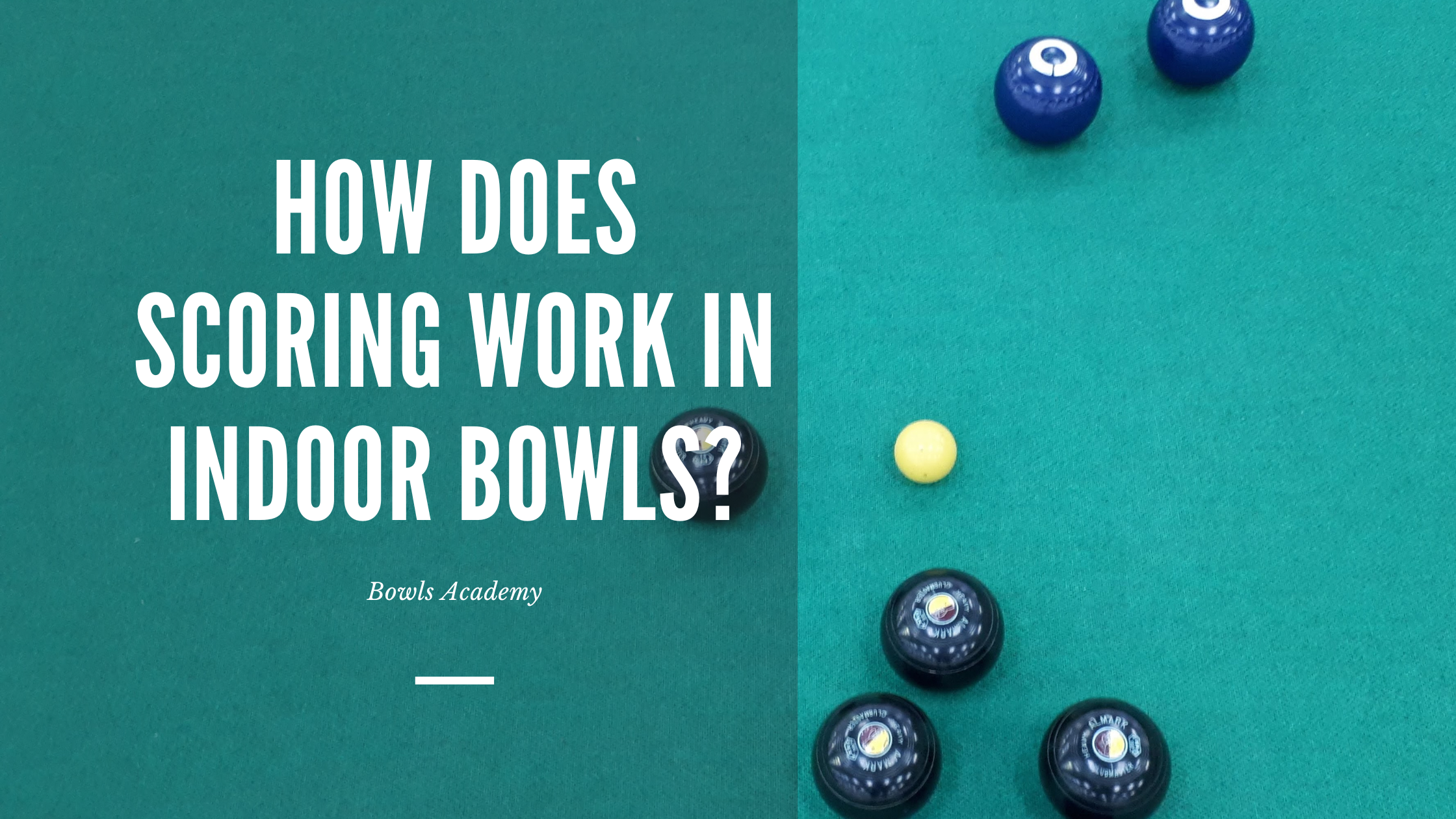Table of Contents
Some links on posts are affiliate links and will earn us a commission from qualifying purchases
Just like the game itself, scoring in indoor bowls is very simple. So let’s take a quick look at how you score shots in indoor bowls.
When an end has finished, the shots are added up to work out the scores. The nearest bowl to the jack is the shot wood and scores one point. If the second nearest wood is from the same player in singles, or the same team in a team game, then this is also counted and two points are awarded. this carries on until the closest opposition bowl is found. So 3 of your bowls closer than oppositions counts as 3 points, and so on. These points are called shots, and the scorecard and scoreboard are updated to show that number.
So as you can see, it’s quite simple to count the shots won in an end.
But what about the overall score in a game of indoor bowls?
Generally speaking, if you are playing a singles game, then the aim is to reach 21 shots before your opponent. As each player has 4 bowls, then the aim would be to win as many shots each end, whilst if you lose the end you try and get close enough to only drop one shot.
In theory, a player could win a singles match in 6 ends, scoring lots of fours and maybe some threes. Or even 5 fours and a single. But this would be an extreme example. It is rare that a game is so one-sided that one player would not score at all – and I’ve never seen it happen in 35 years of playing.
Most singles games will ebb and flow, with one player maybe taking a lead and then the other coming back. The biggest differences I have ever been involved in is 21-2 – and yes, both losing and winning scorelines.
How do you score in team games?
The aim again is to get as close to the jack as possible, and as such your team can count all their bowls that are closer to the jack than the opponents. So if you were skipping in a pairs game and your lead had a good end, you’d want to maximise the opportunity of getting a large “count”, whilst also being conscious of the opposing skip attacking the good work that your lead has done.
Pairs matches are often 18 or 21 ends, and as such you play that number of ends with the scores added up as you go. Once again it’s important to score as many as possible when you do hold, or if you do drop shots then try to drop only 1 or 2.
Triples games are generally 18 ends, and Fours games are either 18 or 21 ends. When playing in a team game like this players will find form and go off at different times. A good team will recognise when one of it’s members is struggling and will try extra hard to cover that player whilst they find some form again. Encouragement also helps rather than sledging the struggling player!
What about scoring in multi-rink competitions?
Unless the competition rules state otherwise, all shots will count. So if you are playing in a club match with 6 rinks against another club, then all shots will count towards the overall result. This is where electronic scoreboards come into their own – it saves adding up across 6 rinks whilst also concentrating on playing well!
The same goes with competitions such as the Denny Cup, Yetton Trophy, or Egham Trophy. These are all National competitions organised by the EIBA, but with 2 rinks at home and 2 rinks away, knowing the overall scoreline is trickier. A good club will have a spectator or reserve at each venue who can relay scores by phone or by text, so that the up to date position is known by the players when required.
Knowing the overall score in a competition at 2 venues is doubly important in the closing stages. It’s possible that if the game is tight then one venue may be coasting but suddenly drop a big count, which may change the shots played at the other venue. Or of course you may be behind and then one rink picks up a 6 – this will have a positive effect on the other rinks.
But I’ve seen bowls on TV and they don’t play 21 shots?
You may have watched the World Indoor Singles and Pairs at Potters in January and noticed they don’t play 21 shots or 21 ends, but instead play 2 sets. There are varying format for competitions, and this is just one example.
in January and noticed they don’t play 21 shots or 21 ends, but instead play 2 sets. There are varying format for competitions, and this is just one example.
The World Bowls Tour events generally play 2 sets of 9 ends each, with the final being 11 ends. This was designed to help TV coverage. A singles match over this format will take about 1 hour 40 minutes – and so the BBC know that they can schedule a game on their channels easily. They used to be held over 5 sets, first to 7 shots per set, but the length of game could be really quick or really long, and so coverage on TV was not great and matches were often cut off mid-game to go to Final Score in the football.
In the current format, if the scores are tied at one set each, a 3 end tie-break is then played, with ends counting as a single shot. The BBC can then allow time for a tie-break in their scheduling, and if a tie-break is not required they will be able to show highlights from other games already played that day.
Are their other scoring formats?
Yes, other scoring formats are in place for different competitions, most noticeably in events such as the Fantastic Fives or Top Club, where points are awarded for each discipline. This just brings a different element to play and a little bit of excitement as each game is progressing.
or Top Club, where points are awarded for each discipline. This just brings a different element to play and a little bit of excitement as each game is progressing.
Your own club may have their own competitions with different formats. At the Angel we have the Bernard King mixed singles event. We also play over WBT rules of 2 sets of 9 ends, although we used to have the best of 5 sets with each set being the first to 7 shots. It was possible to win in 6 ends under this old format, with a 4 and 3 in each set, although I also played in a final that went over 4 hours (7-6, 6-7, 7-6, 6-7, 7-0)!!
Conclusion – how does the scoring work in indoor bowls?
We’ve taken a look at how you score each end in bowls, and also at different competitions where scoring is slightly different. But scoring shots each end is the same – it’s the number of your bowls closer to the jack than your opponents. So try to maximise each scoring opportunity when you play, and do your best not to drop a big count against.

